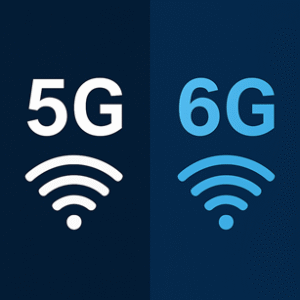(Discover how 6G will redefine wireless technology beyond 5G. Explore speed, latency, and future applications in this detailed tech comparison.)

Introduction
As the world steadily embraces the power of 5G, a new technological revolution is quietly taking shape — 6G. Set to debut around 2030, 6G promises to take wireless communication to levels we’ve only dreamed of. But what exactly makes it so different from 5G? Let’s explore the future of connectivity and how it will reshape our digital lives.
What 5G Offers Today
5G technology has already pushed the boundaries of mobile communication. With blazing speeds and low latency, it’s transformed everything from streaming to smart cities.
Key Highlights of 5G:
- Speed: Up to 10 Gbps in ideal conditions
- Latency: Around 1 millisecond
- Bandwidth: Uses high-frequency millimeter waves
- Real-World Use Cases: Smart homes, AR/VR experiences, autonomous vehicles
However, as adoption continues, 5G faces hurdles like limited rural coverage, infrastructure complexity, and power consumption challenges.
The Rise of 6G: A Glimpse into the Future
While 5G is still expanding, researchers and tech giants have already started shaping the vision of 6G — a network that’s not just faster but smarter.
Expected 6G Features:
- Ultra-High Speeds: Up to 1 Terabit per second (Tbps)
- Latency: Under 1 millisecond, possibly in microseconds
- New Frequency Band: Terahertz (THz) spectrum
- AI Integration: Embedded artificial intelligence for real-time decisions
- Potential Use Cases: Holographic meetings, real-time language translation, brain-computer interfaces
In essence, 6G won’t just connect devices — it will connect people, machines, and environments in unimaginable ways.
5G vs 6G: Side-by-Side Comparison
| Feature | 5G | 6G |
|---|---|---|
| Max Speed | 10 Gbps | Up to 1 Tbps |
| Latency | ~1 ms | <0.1 ms |
| Frequencies | Sub-6 GHz & mmWave | Terahertz (THz) |
| AI Capability | Limited | Built-in AI optimization |
| Main Focus | Faster connectivity | Real-time intelligence + XR |
| Applications | IoT, smart cities, VR | Holography, robotics, remote surgery |
Countries Leading the 6G Race
The global 6 G race is already heating up. Governments and corporations are investing billions in early R&D to shape the next era of wireless innovation.
- China: Sent the world’s first 6 G satellite into orbit in 2020
- South Korea: Samsung & LG aim to lead with early 6 G trials by 2028
- United States: Next G Alliance is collaborating to dominate the 6 G ecosystem
- Europe: Projects like Hexa-X are shaping early 6 G architecture and standards
Real-World Applications of 6G
What will 6 G change in everyday life? The possibilities go far beyond what current networks can handle:
- Healthcare: Real-time remote surgeries with zero delay
- Transport: Safer autonomous cars with instant data relay
- Education: Holographic classrooms and ultra-immersive learning
- Entertainment: True-to-life XR (Extended Reality) experiences
- Manufacturing: AI-driven smart factories with predictive maintenance
With 6G, industries will operate on hyper-connected ecosystems powered by intelligent automation.
Challenges on the Road to 6G
While exciting, 6G comes with serious challenges that must be addressed before its commercial debut:
- Infrastructure Overhaul: Requires new antennas, chips, and protocols
- Power Efficiency: Managing energy consumption at high data rates
- Security: Securing hyper-connected environments from cyber threats
- Global Standards: Need for unified regulations and spectrum alignment
Governments, telcos, and hardware makers must work together to build the foundation for this massive shift.
FAQs: 5G vs 6G
Q1: When will 6 G be available?
A: Most experts project a commercial rollout around 2030, with testing beginning as early as 2028.
Q2: How fast will 6 G be?
A: 6 G aims to deliver theoretical speeds up to 1 Tbps — nearly 100 times faster than today’s 5G networks.
Q3: Will 6 G replace 5G?
A: Not immediately. 6 G will initially complement 5G and gradually take over as its ecosystem matures.
Q4: What will 6 G enable that 5G can’t?
A: Technologies like holography, brain-machine interfaces, and massive real-time data exchanges.
Q5: Is any country already using 6 G?
A: No. All countries are still in the research and testing phase.
http://whatsapp-vs-telegram-2025-which-app-wins
Conclusion
As 5G continues to shape our digital landscape, the vision of 6 G promises a future where machines and humans communicate seamlessly across physical and virtual dimensions. It’s not just about faster internet — it’s about unlocking the next level of intelligence, automation, and connectivity.
🚀 What’s Next?
Stay ahead of the curve! Subscribe to our newsletter for future updates on 6G, AI, and smart tech. Got thoughts on 6G? Drop a comment below 👇




